Mysterious cut bisects rocks over 10,000 years old in Saudi Arabia
The Al Naslaa block was bisected by a cut line thousands of years ago, exactly like the application of high-tech machinery.
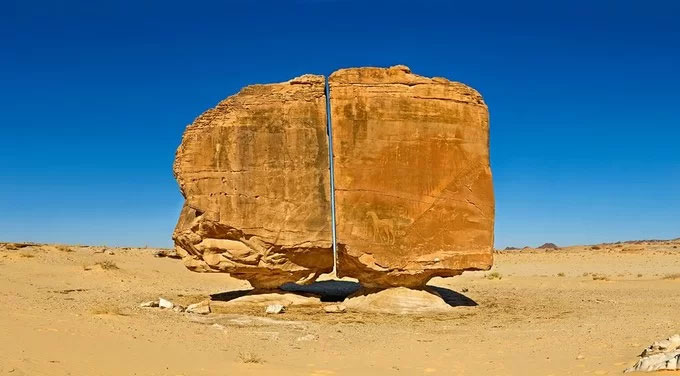
The world has many exotic destinations that attract the curiosity of tourists and researchers. One of them is the Al Naslaa Rock, located in the oasis of Tayma, Saudi Arabia, with the cut considered perfect as using modern laser technology to split the block and mysterious drawings on the surface. (Photo: Unusual Place).
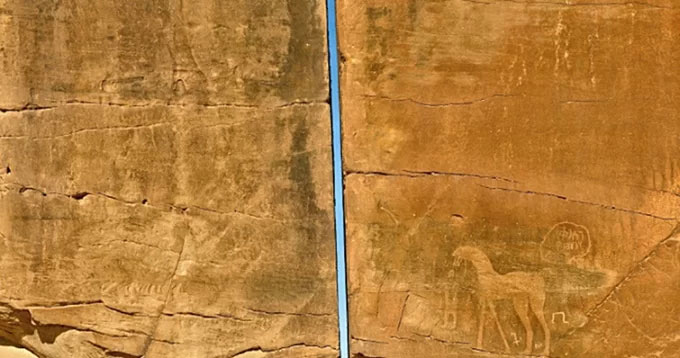
Since the hundreds of tons of rock was discovered in 1883 by Charles Huver, no one has been able to explain the origin of the cut or whether it ever existed and whether it was a natural phenomenon. . (Photo: Ancient-code).
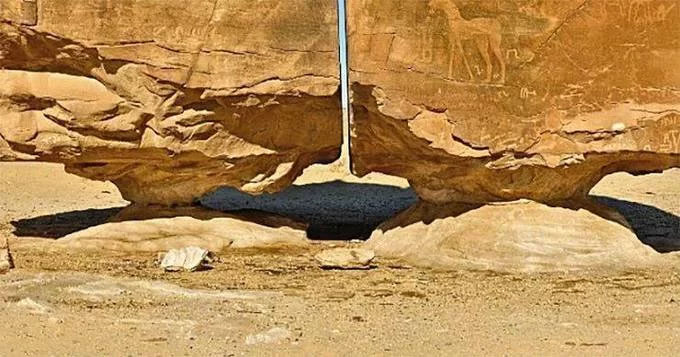
Each half of the block is about 7 meters high, standing balanced on a smaller rock below. Many people speculate that this structure causes vibrations from the ground to be eliminated, helping the rock stand for thousands of years. (Photo: Pinterest).
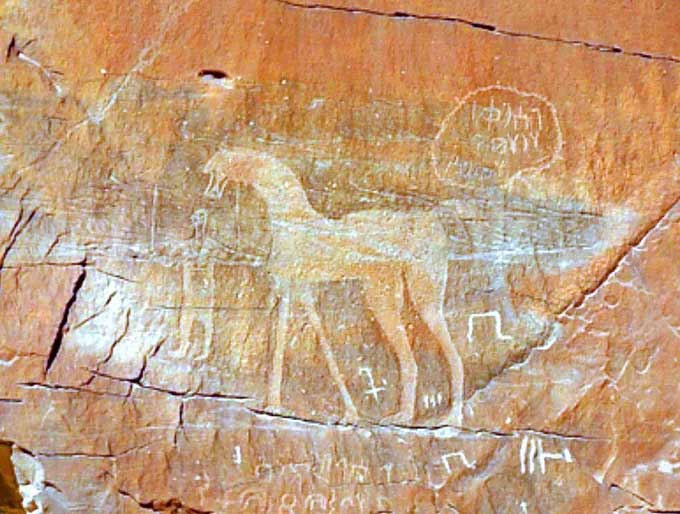
No one understands the meaning of the mysterious drawings and characters on the surface of the rock. According to archaeologists, the oldest records of the Tayma oasis date back to the 8th century BC. The glyphs and hieroglyphs here can refer to Tayma as part of an important road route linking the Red Sea coast of the Arabian Peninsula and the Nile valley. (Photo: Indocropcircles).
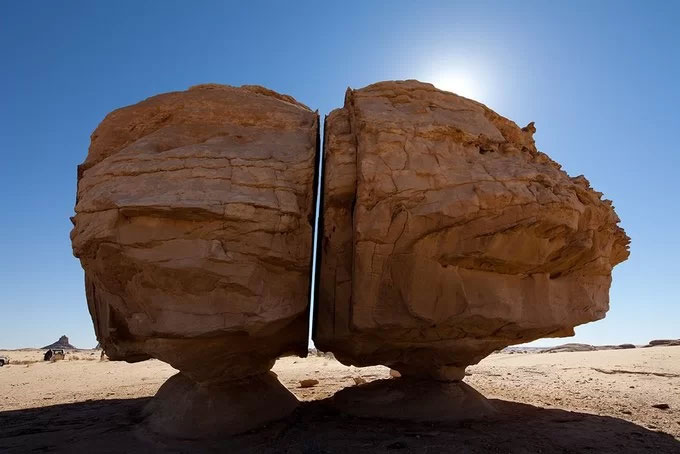
The back of the Al Naslaa block is not as flat as the front. It is estimated to be 10,000 years old. There are currently two streams of opinion for the formation of the Al Naslaa rock. Some people think that this is a natural phenomenon, the vibrations in the ground that split the rock in two. Other ideas suggest that this was the work of a lost civilization with a high technical level. Although there is no satisfactory answer, this stone still attracts thousands of visitors to the Tayma region every year. (Photo: Pinterest).
- 5 unexpected little things about Saudi Arabia
- Admiring the draft of the Hyperloop system in Saudi Arabia, it may shorten the travel time from a few hours to a few minutes.
- Where to watch 18+ movies and drink alcohol?
- Video: Mysterious sandstorm pits a few dozen meters high in the desert
- Top 10 most expensive buildings in the world
- Africa and Saudi Arabia are separate
- Saudi Arabia built the tallest skyscraper in the world
- Arid lands, Saudi Arabia responds by
- Found bones of 9,000-year-old rotten fingers in Saudi Arabia
- An Australian helps Arabs find 2,000 archaeological sites
- Let's admire the city of 10 billion USD that Saudi Arabia is building
- Saudi Arabia built the world's most modern subway system
 The truth about the mysterious red-haired giant at Lovelock Cave
The truth about the mysterious red-haired giant at Lovelock Cave Inunaki Tunnel: The haunted road leading into Japan's 'village of death'
Inunaki Tunnel: The haunted road leading into Japan's 'village of death' The mystery of the phenomenon of human reflection before dying
The mystery of the phenomenon of human reflection before dying 6 mysterious phenomena, although science has been developed for a long time, still cannot be answered
6 mysterious phenomena, although science has been developed for a long time, still cannot be answered